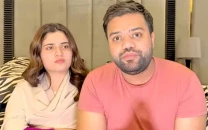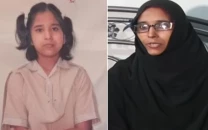Mind your language
The Pakistani disdain towards Punjabi clearly carries over to our attitude towards the Punjabi culture in general

PHOTO SOURCE: CREATIVE COMMONS
While some silly defence by the school was expected, more interesting is that they also argued that how could a ‘Punjabi Head Master’ call his ‘mother tongue’ ‘foul’? But that is where the crux of the matter is: most Punjabis from West Punjab not only look down upon their own language but even deride it.
Lahore woman seeks FIR against boys for using slurs while playing street cricket

In his Punjab ka Muqadama [Punjab’s Lawsuit] written over three decades ago, veteran politician Hanif Ramay lamented the fact that he had to write Punjabi’s case in Urdu, simply because the Punjabis have lost the ability to read and write their own language. Ramay bewailed that in order to become ‘Pakistani’ the Punjabis had discarded their own language and focused only on Urdu. The sole emphasis on Urdu meant that while the Punjabis became dominant in the civil-military bureaucracy in Pakistan, they did so at the expense of their own identity and culture. In fact in an ironic twist of history while this Punjabi-dominated ruling elite looked down upon our erstwhile compatriots, the East Bengalis, since they thought that they were not ‘Muslim enough’ and that the Bengali language was ‘too Hindu,’ they thought the same about their own culture and language too!
The deep bias against Punjabi in Pakistan has not only stunted the growth of the language on this side of the Radcliffe line linguistically and academically, it has relegated it to being a ‘vulgar’ tongue, considered ‘rustic’ at best. This means that West Punjabis are shocked when a professor speaks Punjabi in class, not pejoratively or in jest, but academically, and students are told that one can actually ‘study’ in Punjabi the various subjects they are now studying in either English or Urdu.
Experts discuss link between mother tongue and academic success
The Pakistani disdain towards Punjabi clearly carries over to our attitude towards the Punjabi culture in general. Almost every semester I ask my students what their ‘local dress’ is and almost always I get the answer ‘shalwar kameez’ from a room full of Punjabis.
When I mention that maybe a ‘kurta dhoti’ might be more local I get a confused, almost repulsed, look on the face of most students—as if something demeaning had been talked about. Some even say ‘oh that’s what the village people wear,’ or ‘that’s something people used to wear but now wear better clothes.’ It is as if most students would want their Punjabi culture buried under the skinny cut jeans and designer shalwar kameez. Having a preference for clothing is one thing, being embarrassed about it is quite another.
Language is one of the most important markers of identity and defines a people, a nation. The central problem with the notification mentioned above is that is coming from a school. A school is where a child is formed, where they learn how to be an informed, educated citizen, and so if such a hallowed place considers a language [and it could be any language] as ‘foul’ then it is a real cause of concern. Singling our Punjabi for such a treatment clearly shows the attitude the school and, by extension, soon all of its students and faculty will have towards the language. Children raised in such an environment will have no choice but to look down upon their vernacular language since they never had a choice to engage with it. Therefore the school would be producing shallow, ungrounded, and confused individuals, rather than the complete opposite.
Mind your language
In today’s cosmopolitan world it is impossible to stick to one language and most people are bilingual or even multilingual, but denigrating one’s own language shows a deep unease with who we are. Punjab is 50 per cent of Pakistan and if people in Punjab are ashamed of who they are, then what will be the fate of Pakistan itself?
Published in The Express Tribune, October 17th, 2016.
Like Opinion & Editorial on Facebook, follow @ETOpEd on Twitter to receive all updates on all our daily pieces.














COMMENTS
Comments are moderated and generally will be posted if they are on-topic and not abusive.
For more information, please see our Comments FAQ